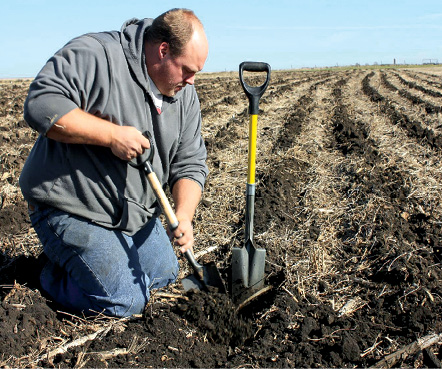Advertise Follow Us

Digging In: Strip and Furrow Analysis
‘Planter Doctor’ Kevin Kimberley shares how strip-tillers can dig into strips to diagnose and address problems, improve crop emergence and yields.
HARDPAN LAYERS. Strip-till and no-till are recognized for their ability to reduce compaction, but compaction layers can still be more prevalent than many farmers think. Often time, the only way a farmer can be sure about how deep and thick their compaction layers are is to go digging for them.
Photo Courtesy of Kevin Kimberley
If working with farmers from eight states for more than 15 years has taught Kevin Kimberley anything, it’s that farmers should let the soil dictate their management decisions.
To hear what the soil is saying, though, growers need a good shovel, says the owner of Kimberley Ag Consulting, in Maxwell, Iowa.
At the 2nd annual National Strip-Till Conference held this past August in Iowa City, Iowa, Kimberley told strip-tillers that diagnosing ailing crops is often as easy as peeking just beneath the surface of the soil.
Voids in the Strip
When digging for answers, there is technique to consider.
“We’ll usually start by making a test strip,” says Kimberley. “Then we stick a spade straight down into the strip and dig out in front of that so you can see the profile. Then I look for holes or voids at the bottom of the strip.”
Kimberley often finds that farmers’ knives or coulters on their rig are blowing soil out of the strip rather than cutting through, which can cause a void at the bottom of the strip that runs its length. An empty space at the base of the strip compromises the seedbed.

DIGGING…





